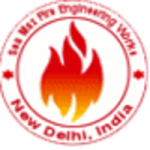We deals in different type of fire protection and fire fighting equipment their are list of products fire extinguishers, fire alarm ,fire detectors, fire hose, fire hydrant, sprinklers, fire valve and risers, fire rated doors ,industrial emergency light,co2 system, clean agent system, fire exit plan, fire suppression system, fire protection system, AMC of fire fighting system and fire detection system. we install in all types of fire fighting system.
Fire Sprinkler Systems:
Wet Pipe Systems: These are the most common type, where water is constantly present in the pipes and released immediately upon detecting heat.
Dry Pipe Systems: Suitable for areas prone to freezing, these systems use pressurized air or nitrogen to keep water out of the pipes until a fire triggers the system.
Fire Alarm Systems:
Smoke Detectors: These devices detect the presence of smoke particles, triggering alarms to warn occupants and initiate emergency response.
Heat Detectors: Activated by high temperatures, these detectors are suitable for environments where smoke detectors may produce false alarms.
Fire Extinguishing Systems:
Clean Agent Systems: Utilizing gases like FM-200 or CO2, these systems suppress fires by reducing oxygen levels or inhibiting chemical reactions without causing damage to sensitive equipment.
Foam Systems: Ideal for flammable liquid fires, foam extinguishing systems create a blanket that prevents the release of flammable vapors.
Fire Suppression Sprays:
Water Mist Systems: These systems disperse fine water droplets, reducing heat and oxygen levels to suppress fires without causing significant water damage.
High-Pressure Water Systems: Employing specialized nozzles, these systems release water at high pressures to combat fires in specific areas.
Fireproofing Services:
Structural Fireproofing: Applying fire-resistant materials to structural elements like steel beams and columns to delay the onset of structural failure during a fire.
Fire-Resistant Coatings: Adding coatings to surfaces to inhibit the spread of flames and provide a protective barrier.
Fire Safety Consulting and Training:
Risk Assessment: Professionals assess potential fire hazards in buildings and recommend preventive measures and suitable fire protection systems.
Training Programs: Conducting fire safety drills, evacuation exercises, and providing education on the proper use of fire protection equipment.
Emergency Lighting and Exit Sign Services:
Emergency Lighting: Ensures that exit paths are well-lit during power outages, aiding safe evacuation.
Exit Signs: Clearly marked exit signs guide occupants to safe egress routes.
Investing in a comprehensive fire protection system and related services is crucial for minimizing the impact of fires and ensuring the safety of people and property. Regular maintenance, testing, and adherence to fire safety regulations are essential to the effectiveness of these systems.
A fire safety system is a comprehensive network of equipment, measures, and protocols designed to prevent, detect, and mitigate the impact of fires in various settings. These systems are crucial for protecting lives, property, and the environment. Here are key components and features commonly found in a fire safety system:
Fire Detection Systems:
Smoke Detectors: These devices sense the presence of smoke particles in the air, triggering alarms and alerting occupants to the potential danger.
Heat Detectors: Activated by high temperatures, these detectors are suitable for areas where smoke detectors may not be effective.
Fire Suppression Systems:
Fire Sprinkler Systems: Automatically release water to suppress or extinguish fires in their early stages, preventing the spread of flames.
Clean Agent Systems: Use gases or chemicals that are safe for occupied spaces to suppress fires without causing harm to people or sensitive equipment.
Emergency Evacuation Systems:
Emergency Lighting: Provides illumination in case of power failure, ensuring safe evacuation routes are well-lit.
Exit Signs: Clearly marked signs indicating the location of emergency exits help guide people to safety.
Fire Extinguishers:
Strategically placed portable fire extinguishers containing various agents (water, foam, CO2, dry chemicals) for immediate use in controlling small fires.
Alarm and Communication Systems:
Fire Alarms: Audible and visual alarms notify occupants of a fire, allowing for quick evacuation.
Communication Systems: Intercoms and public address systems facilitate communication during emergencies, providing instructions and information.
Fireproofing Measures:
Structural Fireproofing: Application of fire-resistant materials to structural components to delay the onset of structural failure.
Fire-Resistant Coatings: Application of coatings to surfaces to inhibit flame spread and provide a protective barrier.
SEA MAX FIRE ENGINEERING WORKS ARE THE TOP LEADING MANUFACTURER AND SERVICE PROVIDER OF ALL TYPES OF FIRE FIGHTING, PROTECTION EQUIPMENT, Fire Suppression System, Fire Protection System, Fire Fighting System, Fire Detection System, Fire Consultant, Fire Extinguisher Refilling, AMC Of Fire Fighting and Fire Safety Training
We provide all types of Fire Extinguisher, Fire Alarms, Fire Detectors, Fire Rated Doors, Emergency light, Fire Exit Plan, Fire Fighting, Fire Protection.











